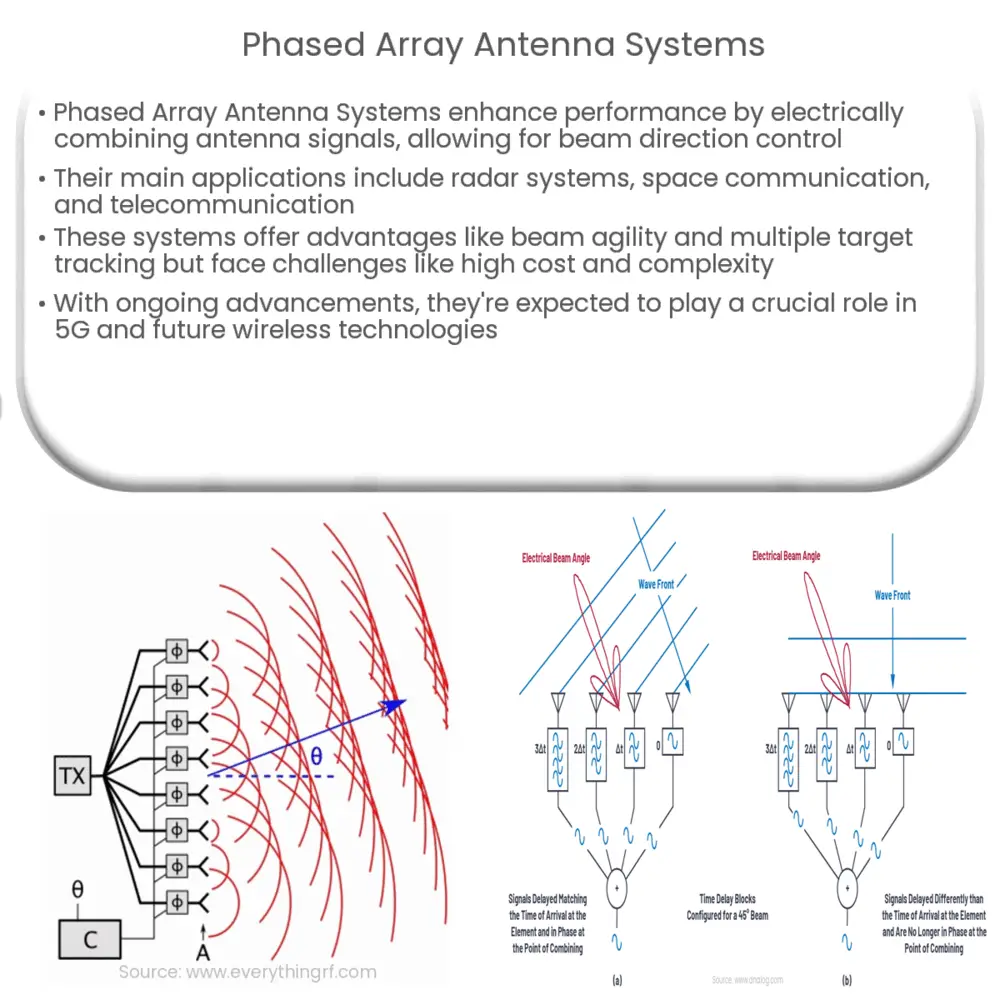Explore the functionality, applications, and future of Phased Array Antenna Systems in wireless communication and radar technology.

Introduction to Phased Array Antenna Systems
Phased Array Antenna Systems are an integral component of modern telecommunication and radar systems. They are sophisticated arrays of antennas whose signals are electrically combined to improve the performance over a single antenna. Their primary use is to control the direction of the radiated wavefront by controlling the phase of the signals fed to each antenna.
Working Principle of Phased Array Antenna Systems
The principle behind phased array antennas is the combination of waves which are in phase. That means the peak of the wave from each antenna element arrives at the same time, adding up to give a stronger wave. This concept allows the array to radiate power in a particular direction while suppressing the power in undesired directions. In effect, they offer the capability to ‘point’ the beam in any direction without physically moving the antennas.
Applications of Phased Array Antenna Systems
-
One of the primary applications is in radar systems. This is where the term phased array is most commonly heard, especially regarding military radar systems. In these systems, phased array antennas are used to track multiple objects simultaneously.
-
In space exploration, these antenna systems are used for deep space communication. NASA, for example, uses phased array antenna systems in their Deep Space Network (DSN).
-
Moreover, these systems are also used in commercial and residential telecommunication systems for better coverage and capacity.
Advantages of Phased Array Antenna Systems
There are several distinct advantages that make phased array antenna systems favorable over traditional antenna systems. One of these is the beam agility, which allows for swift changes in the direction and shape of the beam. This significantly improves the speed and accuracy of detecting and tracking targets. Furthermore, the multiple beams capability makes it possible to track multiple targets or serve multiple users simultaneously. This capability has made phased array systems indispensable in modern telecommunications, radar, and other electronic systems.
Design and Technology of Phased Array Antenna Systems
Designing phased array antenna systems requires precision and a comprehensive understanding of electromagnetic theory. The arrangement and spacing of the individual antennas or ‘elements’ within the array are paramount to the system’s overall performance. The layout can be linear or planar, with each having its own advantages and applications.
The technology behind phased array systems has advanced significantly over the years. In the past, these systems were characterized by high cost, large size, and high power consumption. However, with the advent of semiconductor technology and digital beamforming, phased array systems have become more compact, efficient, and affordable.
Challenges and Future Perspectives
Despite their advantages and recent technological advancements, phased array antenna systems are not without challenges. The key challenge is the cost of the system, which can escalate with the number of elements or antennas in the array. Furthermore, managing the phase and amplitude of each individual antenna to ensure coherent wavefronts is also complex. However, advancements in software and hardware technology are expected to mitigate these challenges in the future.
As we look towards the future, phased array antenna systems are expected to play a significant role in 5G and subsequent wireless communication technologies. With the ability to provide highly directional beams, these systems will be essential in handling the high-frequency bands that 5G and future networks will operate on.
Conclusion
In conclusion, phased array antenna systems have revolutionized the field of wireless communication and radar systems. By offering beam agility and the ability to track multiple targets simultaneously, they offer superior performance over traditional antenna systems. While there are still challenges to overcome, the ongoing advancements in technology promise a bright future for phased array antenna systems. Whether it’s for military applications, space exploration, or the next generation of wireless communication technologies, these systems are poised to be at the forefront of these developments.

